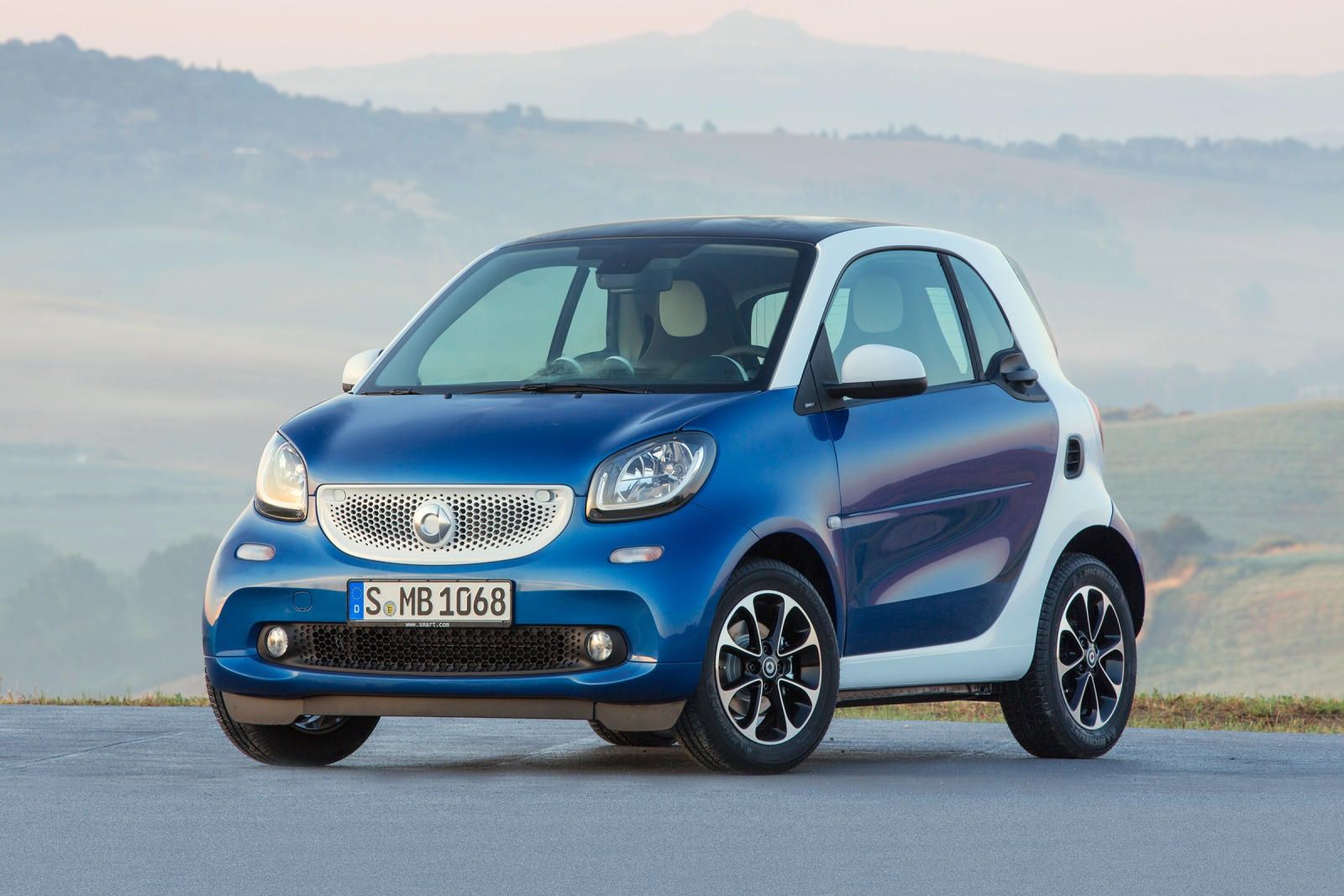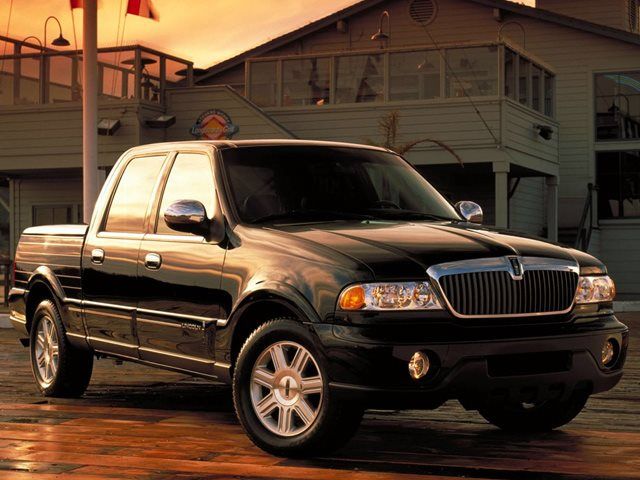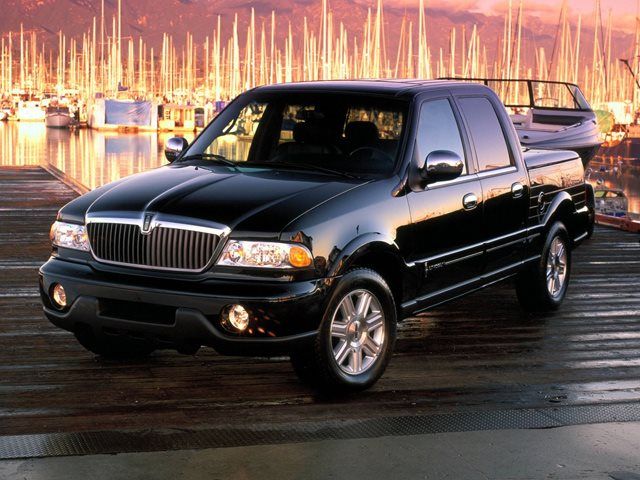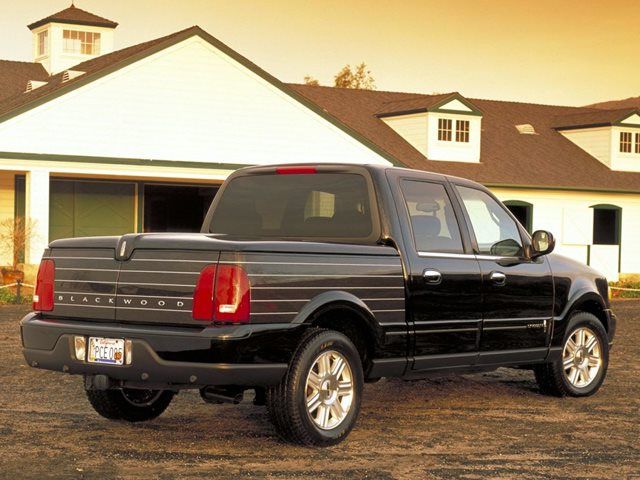
The Lincoln Blackwood was another case of badge engineering gone wrong, but here actual rebadging itself is a very small factor when compared to all of the many, many other things which were wrong with the Blackwood. What interesting about the Blackwood is that the year after its debut saw the unveiling of the Cadillac Escalade EXT and the Hummer H2. Both of these were big, expensive vehicles which would never really be used in any sort of genuinely utilitarian fashion.
The Blackwood, however, was the only one which failed outright. There is a very good reason for this, but we'll get to that in a bit. Since it was such a spectacular failure, the Blackwood tends to look to us now like a terrible business decision. It was, of course, but in 2001 this wasn't quite so obvious. Lincoln had been coasting for quite a while on badge-engineered semi-pseudo-luxury versions of other Ford products. The exception was their lukewarm Euro-fighter, the LS, but this was still a cheaper version of the Jaguar S-Type, and not a unique platform either.
So Lincoln saw nothing wrong with slapping a new badge on a Ford, if anything, the recent success of the Navigator had served only to reinforce this idea. The decision to build the Navigator was simple extrapolation, the Navigator was a rebadged Expedition, the Expedition was built on the F150 platform, and therefore a rebadged F150 should also be a success. This was clearly a world run by those proverbial "bean counters". Even though we would have to accept from the beginning that a luxury pickup is going to be a strange thing, the Blackwood was enough to give one pause.
Since Lincoln was under no illusion that anyone would so much as attempt to take one of these off-road, some changes were made to the suspension to make the Blackwood more road-friendly. This included a lowering, and the Blackwood is one of the best-handling on-road pickups ever. The front end and cab borrowed much from the Navigator, but this was to be expected and makes perfect sense. It's behind the cab where things start to get weird. In place of paint, the exterior of the bed was covered in what amounted to a large vinyl decal which was meant to look like burled black wood with artificial aluminum pinstripes over it.
If the obviously fake wood didn't quite succeed in making you scratch your head, the bed was redone as a trunk, finished in stainless steel, thick carpet and topped with a power tonneau. There wasn't even a four-wheel-drive option. Naturally, if you had just spent $52,000 on a pickup truck (seriously, it cost $52,000) then you probably weren't going to use it haul manure anyway, but it's still a very strange thing to look at. This gets to the central problem of the Blackwood, as well as the reason why it failed but the EXT was a success. Vehicles like these are all about showing off, and as such, the image which they projected was important.
By 2002, nobody was really expecting an SUV owner to use it for anything utilitarian, and the EXT was obviously much more SUV than pickup. You could install a hot tub in the bed of an EXT and nobody would bat an eyelash, it was just a show-off-y SUV. But the Blackwood was obviously a pickup, and that's a different thing altogether. Now, plenty of people own pickups without ever using them for their intended purpose. These people are generally buying pickups for the image, they like to appear rugged and independent, and a pickup tells the world that this is the sort of person you are much better than a Camry ever could.
But the Blackwood said the exact opposite. It was too utilitarian for pure conspicuous consumption, but not utilitarian enough to project rugged independence. The Blackwood was a failure of epic proportions, with the shortest production run of any vehicle in this series. Lincoln had announced that they would build "only" 10,000 of these luxo pickups per year, in what seems like some kind of misguided attempt at exclusivity. The first Blackwoods would hit dealerships in October of 2001 and Lincoln would finally throw in the towel in December of 2002.
Blackwoods sat on dealer lot for ages after that, and dealers would finally end up selling them for a fraction of the original price, just to get rid of the damn things. In the end, only 3,356 Blackwoods made it out of the factory before production shut down. Interestingly, Lincoln refused to learn their lesson with the Blackwood, and brought out the Mark LT in 2006. This did noticeably better than the Blackwood, but it still fell well short of sales goals, and even these low sales figures were only achieved as a result of huge discounts from dealers, often ranging up to $10,000 below MSRP, making the Mark LT one of the most-discounted vehicles in America.
The real lesson of the Blackwood is that luxury versions of full-on pickups don't work. If a luxury vehicle is going to have a bed, there needs to be an implied wink, and both the Blackwood and the Mark LT failed utterly at this.



